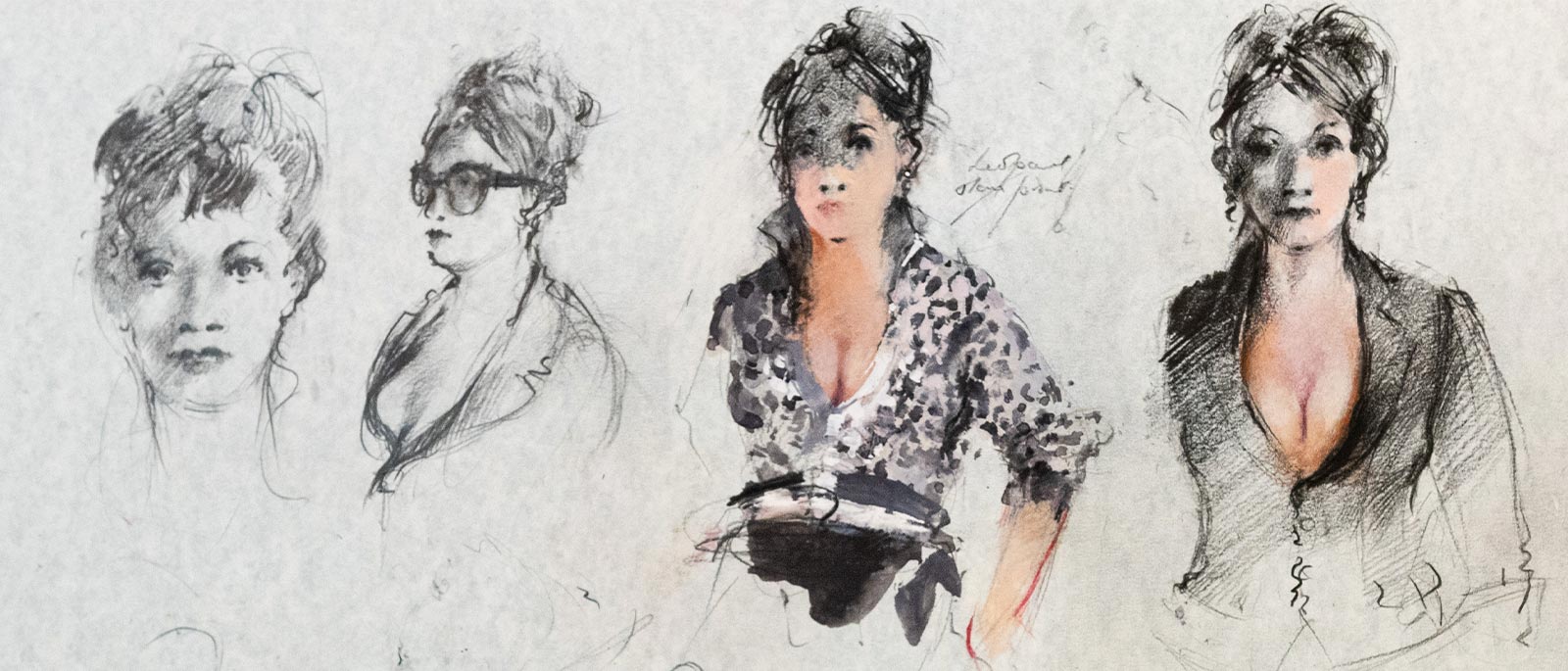
Sure Hand
Visionary set and costume designer John Macfarlane’s versatile aesthetic was on display in two very different new productions during the 2019–20 season: Handel’s Agrippina and Wagner’s Der Fliegende Höllander. As the stagings’ premieres approached, he spoke with the Met’s Joel Rozen.
You’re one of the rare designers who has found success with both sets and costumes. Do you find balancing the two crafts difficult?
Yes, it’s a huge workload doing the two, but it’s somehow easier in my head. But it’s somehow easier in my head. I always do the sets first: I build the model, and during the process of the model building, I work out how the costumes will look—the period, the style, and the color palette. I’ve always wanted the control of putting into the stage space the color palette and style of costumes that I feel are right.
You’ve collaborated with David McVicar many times, including on the Met’s recent Tosca and this season’s production of Agrippina. What is your working relationship like?
One of the great things about David is that he knows what he wants. He absolutely comes to the first meeting in my studio very clear on the structure and the parameters of the production. For a designer, that’s wonderful because then I can take it and run with it.
How did you two meet?
I think it was 1988 or thereabouts. I had done a production of Handel’s Julius Caesar for Scottish Opera with [director] Willy Decker, and there was a little party afterwards. Suddenly, this guy with long hair and a big sheepskin jacket was jumping up and down in front of me, saying, “That was amazing! Wonderful!” And I thought, my god, who is this madman? Fast forward several years, and I got a call from his agent saying that he wanted me to do a production of Agrippina in Brussels. So Agrippina, in 2000, was actually our first show together, and it was great.
In many ways, Handel’s opera is a sendup of current events—it’s satire. Your modern designs clearly contribute to this effect.
When we first did this production, we sort of set it in the ’70s. You know, the world of square shoulders, and hats, and very short skirts for the hookers and the guests at the parties. What has tended to happen since is that each time we’ve done Agrippina, there’s always been maybe four or five years between, and, of course, styles change. The Met version is pretty well up to date: We’ve gone with double-breasted suits, Hugo Boss–style, to the current fashions: very tiny little jackets, tightly buttoned. We might base Agrippina on Megan Mullally from Will & Grace—or even use Sarah Jessica Parker from Sex and the City as a sort of marker for Poppea.
Looking at productions you’ve worked on this season, it’s striking how varied they are stylistically.
I mean, you couldn’t find two more different directors than David McVicar and François Girard, who’s doing Dutchman. Or David McVicar and Richard Jones, whom I did Hansel and Gretel with. But, I still remain the same designer with each show, and if you look through my work, my fingerprints are not very different.
And what are those fingerprints?
I almost always have a solid architectural build and a painted front cloth [also known as a “show curtain,” a drop that is visible before the performance begins and serves as the production’s main curtain]. I love the challenge of doing a front cloth because you have to create something that grabs the audience’s interest and makes them wonder what’s going to happen for the next two or three hours. I often paint the drops myself, and then I have to paint the architecture as well, to work with the drops. So I think that’s the fingerprint: the combination of painting and architecture.
Joel Rozen is the Met’s Associate Editor.